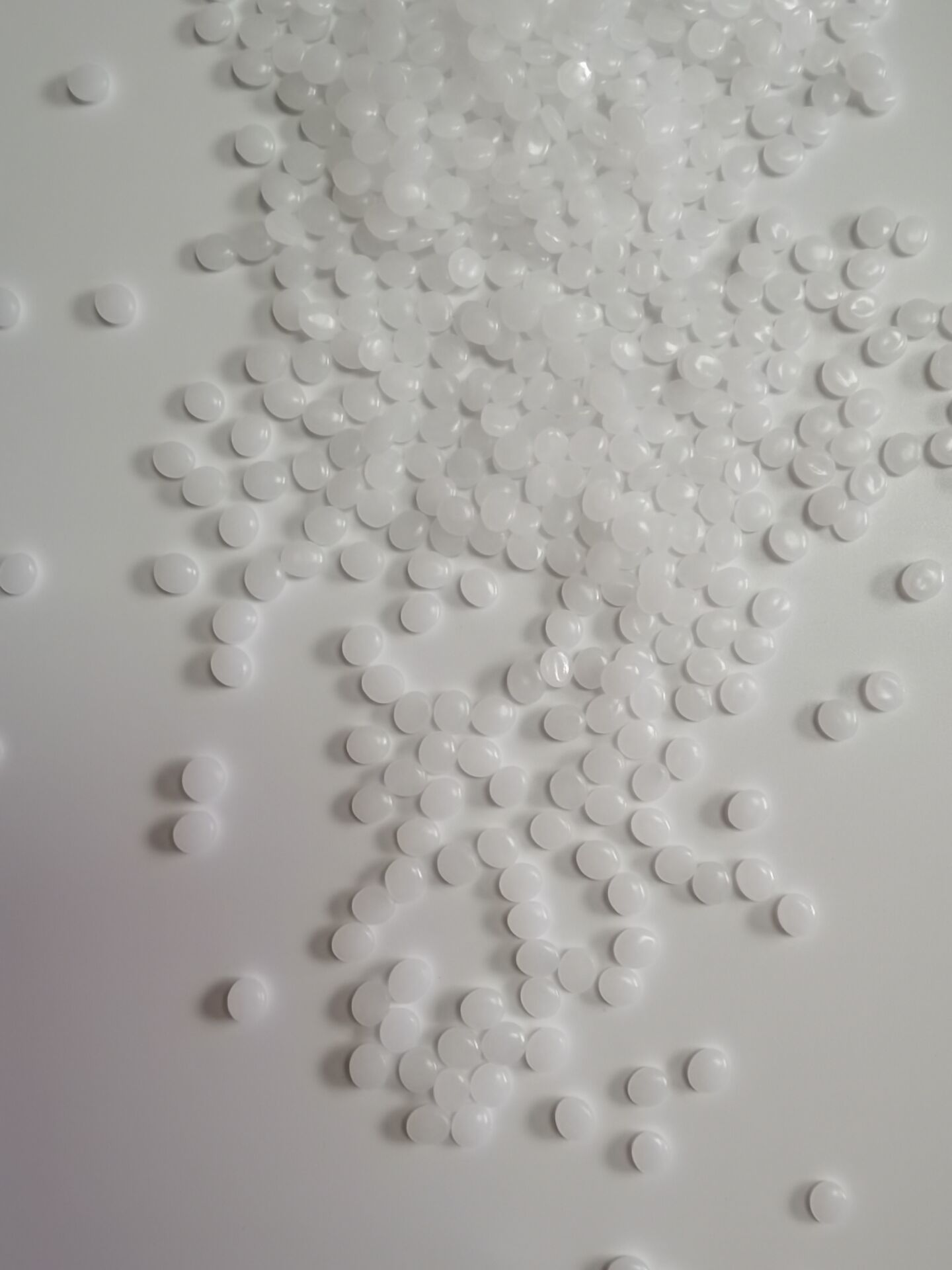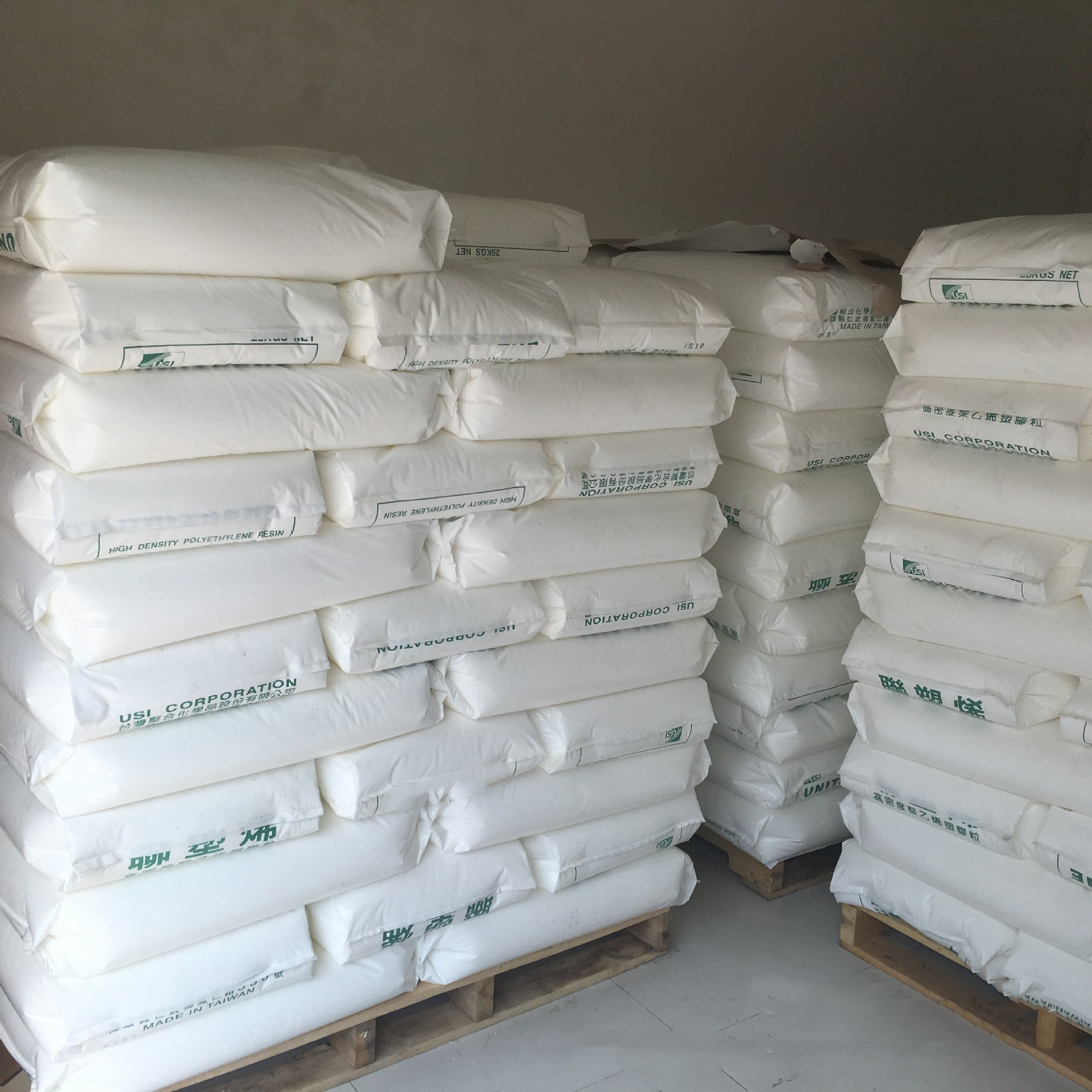High-density polyethylene (HDPE) is a white
powder or granular product. It is non-toxic,
tasteless, crystallinity is 80%-90%, softening
point is 125-135℃, service temperature can reach
100℃; hardness, tensile strength and creep are
better than low-density polyethylene; wear
resistance, electricity Good insulation, toughness
and cold resistance; good chemical stability,
insoluble in any organic solvents at room
temperature, corrosion resistance to acids, alkalis
and various salts; low permeability to water vapor
and air, water absorption Low; poor aging
resistance, environmental stress cracking
resistance is not as good as low-density
polyethylene, especially thermal oxidation will
reduce its performance, so antioxidants and
ultraviolet absorbers must be added to the resin to
improve this deficiency. High-density polyethylene
film has a lower thermal deformation temperature
under stress, so pay attention to it when applying
it.
PE can be manufactured in a wide
range of different processing methods. Using
ethylene as the main raw material, propylene,
1-butene, and hexene as the copolymer, under the
action of a catalyst, the slurry polymerization
or gas phase polymerization process is adopted,
and the obtained polymer is flashed, separated,
dried, granulated, etc. Process to obtain
finished products with uniform particles.
Including such as sheet extrusion, film
extrusion, pipe or profile extrusion, blow
molding, injection molding and rotational
molding. HDPE is suitable for various molding
processes of thermoplastic molding and has good
molding processability, such as injection
molding, extrusion molding, blow molding,
rotational molding, coating, foaming process,
thermoforming, heat sealing welding, heat
welding, etc. Extrusion: The grade used for
extrusion production generally has a melt index
less than 1 and a medium to wide MWD. During
processing, low MI can obtain suitable melt
strength. Wider MWD grades are more suitable for
extrusion because they have higher production
speeds, lower die pressures and reduced melt
fracture tendency. PE has many extrusion
applications, such as wires, cables, hoses, pipes
and profiles. Pipe applications range from
thick-walled black pipes used for natural gas
small-section yellow pipes for industrial and
urban pipelines. The use of large-diameter
hollow-wall pipes as a substitute for rainwater
drainage pipes made of concrete and other sewer
pipes is growing rapidly. Sheet and
thermoforming: The thermoforming lining of many
large picnic refrigerators is made of PE, which
is tough, light and durable. Other sheet and
thermoformed products include mudguards, tank
liners, pan guards, shipping boxes and tanks. A
large number of fast-growing sheet applications
are mulch or pond bottom villages, which are
based on the toughness, chemical resistance and
impermeability of MDPE. Blow molding: More than
1/3 of HDPE sold in the United States is used for
blow molding. These range from bottles containing
bleach, motor oil, detergent, milk and distilled
water to large refrigerators, car fuel tanks and
canisters. The characteristics of blow molding
grades, such as melt strength, ES-CR and
toughness, are similar to those used for sheet
and thermoforming applications, so similar grades
can be used. Injection-blow molding is usually
used to make smaller containers (less than 16oz)
for packaging medicines, shampoos and cosmetics.
One of the advantages of this process is that the
production bottles are automatically trimmed,
without the need for post-finishing steps like
general blow molding. Although some narrow MWD
grades are used to improve surface finish, medium
to wide MWD grades are generally used. Injection
molding: see "Material Properties" above.
Rotational molding: The materials used in this
processing method are generally crushed into
powder materials, which are melted and flowed in
a thermal cycle. Rotomolding uses two types of
PE: general-purpose and cross-linkable.
General-purpose MDPE/HDPE usually has a density
ranging from 0.935 to 0.945g/CC, with a narrow
MWD, which enables the product to have high
impact and minimal warpage, and its melt index is
generally in the range of 3-8. Higher MI grades
are generally not suitable because they do not
have the impact and environmental stress crack
resistance expected of rotomolded products. Film:
PE film processing generally uses ordinary blown
film processing or flat extrusion processing.
Most PE is used for film, general low-density PE
(LDPE) or linear low-density PE (LLDPE) are
available. HDPE film grades are generally used
where superior stretchability and excellent
impermeability are required. For example, HDPE
film is often used for commodity bags, grocery
bags and food packaging.










